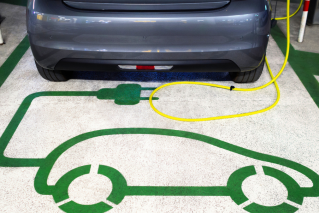Why Australia’s intergenerational wealth gap is widening


Younger people are losing out in the race to build wealth. Photo: TND
The intergenerational wealth divide has widened dramatically in the 16 years to 2018, with young people’s wealth increasing at a much slower pace than that of older age groups.
Australians aged over 65 reaped the largest gains in wealth, according to the Household, Income and Labour Dynamics in Australia (HILDA) report published by the University of Melbourne.
The report found the median wealth of Australians aged 18 to 34 rose by 10.5 per cent between 2002 and 2018, to $137,862.
For those aged 45 to 54, the rise was 20.8 per cent, to $739,194, while for those aged 55 to 64, it was 56.3 per cent, to $1,015,476.
Older retirees experienced an even bigger jump: The wealth of Australians aged between 65 and 74 jumped by a massive 98.1 per cent, to $960,464.
Part of the intergenerational disparity is caused by a decline in full-time work opportunities for young people, according to Conny Lenneberg, executive director of the Brotherhood of St Laurence, an organisation that works to alleviate poverty.
“In the past 10 years, there has been a decline in full-time work available for younger people year on year,” she told The New Daily.
For those over 25, the number of full-time jobs fell 3.3 per cent. But for those under 24, it fell 10 per cent.”
Soaring house prices
The lack of full-time work coincided with a boom in house prices and was an important factor in keeping people out of the housing market.
HILDA’s figures show that home ownership rates have fallen for all age groups other than people aged 65 to 68, where they have remained flat.
However, the fall was much more pronounced for younger demographics.
For those in the 25 to 28 age group, home ownership rates fell from 26.5 per cent in 2002 to 15.7 per cent in 2018 – a fall of 40.8 per cent.
In other words, roughly one in four (26.5 per cent) of 25 to 28 year-olds owned a home in 2002, compared to less than one in six (15.7 per cent) in 2018.
For the same points of comparison, home ownership rates fell by 17.1 per cent to 33.5 per cent for those aged 28 to 32, and by 17.3 per cent to 50.6 per cent for those aged 33 to 36.
Over the 16-year period HILDA surveyed, ABS data shows the average house price across eight capital cities rose by 139 per cent, locking an increasing number of people out of the market.
As a result, “those buying properties are paying off more debt and it is taking longer and we are also seeing lower rates of home ownership,” HILDA author Professor Roger Wilkins said.
Industry Super Australia chief economist Stephen Anthony said government policy was partly to blame for falling home ownership rates.
“Policy settings have driven up asset prices and not stimulated the real economy so the nominal return on assets is higher than real growth in the economy,” Dr Anthony said.
“They have driven down interest rates to virtually zero and stimulated established property prices, while wage growth has been extremely low.
“What is needed is to use fiscal policy to rebuild the capital stock necessary to boost productivity and wages.”
As older people move into retirement, the value of their long-owned property and growing superannuation accounts is pushing up their relative wealth.
“Prior to 2010, the median wealth of people aged 65 to 74 was less
than that of those aged 45 to 54, but by 2010 the median wealth of
the 65 to 74 age group had overtaken the median wealth of
those aged 45 to 54,” HILDA found.
Meanwhile, rising living costs combined with falling levels of home ownership are driving people to work longer.
In 2001, 63 per cent of men and 83 per cent of women retired before they reached 64, but by 2018 that had fallen to 51.4 per cent of men and 64.6 per cent of women.
Women are being pushed into working for longer, with 17.4 per cent working past 67 in 2018 compared to 10 per cent in 2001.
But for men, the proportion working past 67 fell from 20.4 to 19.2 per cent over the same period.
Class matters
John Quiggin, an economics professor at the University of Queensland, did not see rising intergenerational inequality as a problem.
“It’s class, not intergenerational divides, that matters,” Professor Quiggin said.
“People whose parents own houses will get one through inheritance or ‘the bank of mum and dad’.
“If you depend on wage income and your parents do not own a house it is getting harder for you to get one.”
The New Daily is owned by Industry Super Holdings










